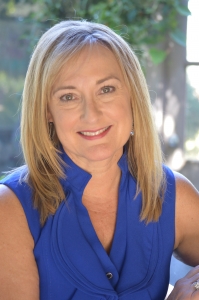Caregiving Expert: “Fill Your Tank”
The number of Americans providing unpaid care to family members or loved ones has increased since 2015. Today, about one in five is acting as a family caregiver to an adult with health or functional needs, according to a 2020 report by AARP and the National Alliance for Caregiving (NAC). Nearly a quarter of caregivers of adults are providing care to multiple people, stepping up to provide unpaid care to family, friends and neighbors who need assistance.
Who are these family caregivers? They are people of all generations, racial/ethnic groups, income and education levels, family types, gender identities and sexual orientations, although women caregivers outnumber men by about 3:2. Nearly two-thirds of caregivers also work outside of their caregiving duties.
Caregivers Report Physical, Emotional and Financial Strain
According to caregiving expert, author and speaker Amy Goyer, caregiving for a loved one can be a time-consuming and costly initiative, though not without its rewards. Goyer has spent her entire adult life providing unpaid care to family members including her grandparents, parents, a sibling, and other relatives and friends – all while holding down full-time jobs and starting a consulting practice.
“Caregivers spend an average of 26 percent of their annual income on caregiving, and in some cases higher,” she says, noting that her caregiving-related financial challenges led her to file for bankruptcy after more than a decade of caregiving intensively for her parents and her sister. The AARP/NAC research found that 28 percent of caregivers stop saving and 23 percent take on more debt as a result of caregiving. Nearly 20 percent leave bills unpaid or pay them late.
Caregiving also can have an impact on the caregiver’s mental and physical health. The AARP/NAC report found that only 41 percent of caregivers report their health status as excellent or very good (down about seven percentage points from 2015). One in four finds it difficult to take care of their own health, and a similar proportion report caregiving has made their own health worse.
“The decline in caregiver self-reported health is concerning, as the stress associated with caregiving may exacerbate declines in health that occur with age,” the report notes. “It begs the question, ‘Who will care for the caregivers?’”
Running on Fumes
Caregivers feel the caregiving push and pull on their time, their financial well-being, their health, their family, their work, and their own personal well-being. Finding the time and the energy to take care of themselves is not always top of mind. Several years ago, Goyer had an “aha” moment as she was pulling out of a service station after filling her car with gas.
“One week, I was so busy working full time and caregiving for family members that I almost let my car run out of gas,” she recalls. “As I drove away from the pump, I noticed how much better the car ran on a full tank of gas. I realized that I had been expecting myself to run on fumes all the time and be just as efficient. In reality, my car doesn’t run well on fumes, and neither do I. If I don’t fill up my physical, mental, and emotional tank, I won’t be as efficient.”
Goyer discovered four ways in which she could fill up her emotional and physical tank:
- “Quick tank fillers” like stopping for a cup of coffee or refreshing drink during the day, having fresh flowers, pausing to hug her parents or pet a dog, doing a few jumping jacks or taking a walk around the block. “Maybe even sitting and doing nothing for a few minutes gives you that quick break you may not even know you need,” she says.
- “Premium fill-ups” take a bit more time but are just as important to do regularly. For Goyer, this means going to a movie, attending a webinar, or participating in a weekly Pilates class. “I planned fun Friday adventures with my parents when I was caregiving for them,” she says. “After their doctor appointments, I took them out for a nice lunch, bit of shopping, or something a little different to fill all of our tanks.”
- “Tune-ups” are time away from caregiving, even if just for a half a day or a weekend. Goyer would try to schedule a week every year where she wasn’t taking care of anyone. “This can be the hardest fill-up due to the time involved and the money required for respite care,” she says.
- “Routine maintenance” includes the basic self-care everyone should practice – sleep, proper nutrition, exercise – but which may seem like luxuries in the face of competing demands. “Sleep was very important for me,” Goyer says. “I also got regular acupuncture to help cope with anxiety and stress.”
“As caregivers, it is important for us to do things in all four of these categories; focusing on only one or two categories just won’t work to keep us going,” Goyer concludes. “We know we need to take care of ourselves, but it’s easy to feel guilty when we take time away from our loved ones. Consciously experience things in each category and remember that caring for yourself isn’t selfish, it’s practical and can help to make you a better caregiver.”
Reference
Caregiving in the U.S. (2020 Report), AARP Family Caregiving™ and National Alliance for Caregiving. Accessed 1/16/23.

















